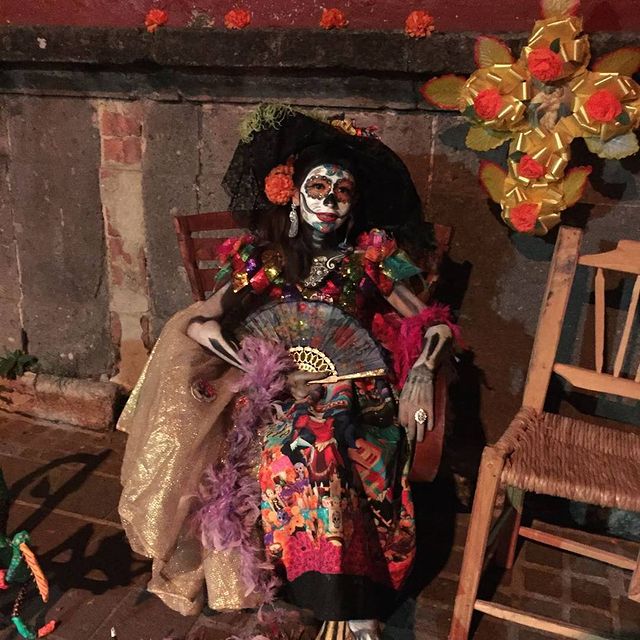How to Create Engaging Lesson Plans Using Local Culture and Traditions

Teaching English as a Foreign Language (TEFL) is more than just a job—it’s a gateway to understanding and connecting with diverse cultures. One of the most powerful ways to engage students in English lessons is by incorporating local culture and traditions into your lesson plans. Doing so not only makes learning more relevant and interesting for students but also enriches their understanding of the world around them.
In this blog post, we’ll explore how you can create dynamic and engaging lesson plans by tapping into local culture and traditions, making your classroom environment vibrant and culturally immersive.
1. Understand Your Students’ Cultural Context
The first step in creating lessons that are engaging and culturally relevant is understanding the culture, traditions, and values of your students. Depending on where you’re teaching, this could involve learning about local festivals, food, history, social norms, and language nuances. As a TEFL teacher, you have the unique opportunity to create lessons that are not only educational but also reflective of the local culture.
For example, if you’re teaching in a country where food plays a central role in social life like Korea, consider a lesson plan that incorporates local cuisine. You can teach vocabulary related to food items, use authentic recipes to explain the past tense (“Last week, we ate…”), or organize role-plays around ordering food in a restaurant.
By weaving elements of local culture into your lessons, you create a stronger connection with your students and make learning more relevant to their lives.
2. Use Local Festivals and Traditions to Build Themes

Local festivals and traditions are rich with language and opportunities for creative lesson planning. These events often come with specific vocabulary, historical context, and cultural significance, making them perfect teaching tools.
Example Lesson Plan Idea: “Celebrating the Lunar New Year”
If you’re teaching in a country that celebrates Lunar New Year like Taiwan, you could build an entire unit around this theme. The lesson plan might include:
- Vocabulary building: Teach words and phrases related to the festival, like “dragon dance,” “red envelopes,” “family reunion,” and “firecrackers.”
- Cultural discussion: Explain the traditions associated with the holiday—what they symbolize, how people celebrate, and the role of family and community. Try engaging a local recipe! Check out The Woks Of Life for some great Lunar New Year recipes.
- Language practice: Create dialogues or role-plays where students can practice greetings or wishes for the New Year.
- Craft activity: Have students create their own “lucky” items or decorations related to the festival while learning specific vocabulary.
Integrating festivals like this into your lessons keeps the content exciting and timely, fostering a deeper appreciation for local culture among your students. You’ll also encourage students to engage with the lesson on a personal level, making it a more enriching learning experience.
3. Introduce Local Literature, Music, and Art

Local literature, music, and art are invaluable resources for teaching English while immersing students in their own culture. Incorporating local stories or songs into your lessons not only provides a fun and engaging way to practice language but also gives students a chance to reflect on their cultural identity.
Example Lesson Plan Idea: “Storytelling with Local Folktales”
In many cultures, folktales play an essential role in preserving history and traditions. You can select a local folktale and:
- Read and discuss the story: Introduce the folktale in English (or with a bilingual approach), allowing students to explore the storyline, characters, and morals.
- Vocabulary exercise: Focus on key words from the story, such as actions, characters, and settings.
- Creative writing: Have students write their own version of the folktale or create a new ending.
- Speaking practice: Students can perform short skits or role-plays based on the story, allowing them to use the language in a fun, interactive way.
Additionally, you can incorporate local music or songs into lessons. Have students listen to traditional songs and analyze the lyrics, focusing on vocabulary, grammar, or even cultural context. This is a great way to introduce students to different accents or dialects of English while celebrating their own culture.
4. Create Real-World Context with Field Trips and Local Interactions

One of the most immersive ways to teach English while highlighting local culture is through real-world activities like field trips or community interactions. A visit to a local museum, cultural site, or even a popular market can spark engaging conversations and provide context for the language you’re teaching.
Example Lesson Plan Idea: “A Visit to the Local Market”
Plan a trip to a local market or bazaar. This experience can help students:
- Learn useful language: Teach students phrases they might use while shopping, bargaining, or asking questions about products.
- Interact with locals: Students can practice English in real-world situations, asking vendors about their products or learning new vocabulary related to local goods.
- Explore cultural differences: Discuss how shopping in the local market may differ from other countries, fostering a deeper understanding of culture.
These hands-on experiences give students the opportunity to practice English in authentic settings while connecting with the community around them.
5. Adapt Your Approach Based on Your Teaching Context
Every region has its own set of challenges and opportunities, and your teaching approach should be tailored to suit your specific context. Whether you’re teaching in a rural village or a bustling urban center, make sure to adapt your lessons to the resources available to you and the unique cultural traits of your students.
For example, in certain areas, students might not have internet access, so you might focus more on physical resources like books, pictures, and community engagement. In contrast, in more urbanized settings, you might have access to digital tools, which can complement your lesson plans by providing interactive materials related to local culture.
By staying flexible and open to your students’ needs, you can ensure that your lessons are both effective and culturally meaningful.
Incorporate Local Culture and Unlock Global Opportunities
Incorporating local culture and traditions into your lessons is not only a great way to engage students, but it also makes learning English more meaningful. Whether you’re using local festivals, literature, or real-world experiences, bringing culture into your classroom helps students feel more connected to the language—and to their heritage.
If you’re passionate about teaching English abroad and want to develop these types of engaging, culturally-infused lesson plans, consider taking a TEFL certification course with myTEFL. Our comprehensive TEFL courses will equip you with the skills needed to create dynamic lesson plans while preparing you for teaching opportunities worldwide. Plus, with our job placement services, you can start teaching and living in a new culture in no time!
Ready to begin your teaching adventure? Learn more about how myTEFL can help you make a lasting impact in the classroom and beyond. Click here to explore our courses and start your journey today!
Creating engaging lesson plans using local culture and traditions is one of the best ways to make learning English more fun, relevant, and engaging for your students. By tapping into the rich cultural context of your students, you can build a bridge between language and life, fostering a deeper understanding of both. With the right approach, you can turn your classroom into a space of cultural exchange, where students not only learn English but also celebrate and reflect on the world they come from.
If you’re ready to expand your skills and take your teaching to a global stage, myTEFL is here to support you. Our expertly designed courses and job placement services will help you teach English abroad and create lessons that resonate with your students on a cultural level.
